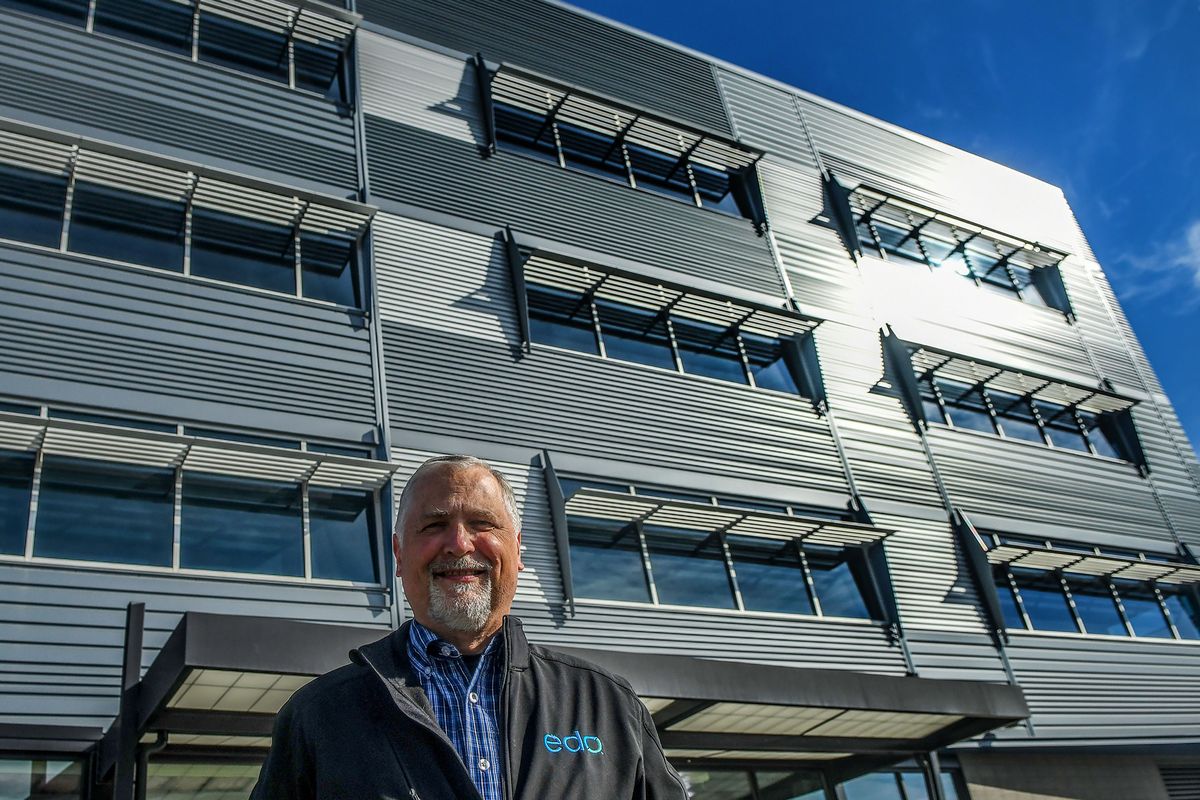Edo, a startup with ties to McKinstry and Avista, launches to create grid-interactive efficient buildings

Former Avista Corp. CEO Scott Morris had a vision to create the five “smartest” blocks in the world, where buildings digitally communicate in real-time to manage electric demand, generation and storage within the power grid.
The foundation for Morris’ vision was realized last year upon completion of the Catalyst Building and the Scott Morris Center for Energy Innovation in the University District. The structures are the first in the South Landing Eco-District to demonstrate a shared-energy model.
Now, executives from Avista and McKinstry – the two companies behind development of the South Landing Eco-District – have launched Edo, a startup that leverages technology to help utilities and firms create grid-interactive efficient buildings.
“Our mission at Edo is to enable a whole lot of utilities to do this type of work,” Hendrik Van Hemert, managing director of Edo, said. “We’re working with utilities across the country to bring these types of solutions to their end customers. A building becoming interactive with the grid is a really important component of a decarbonized energy system and one that’s reliable and cost effective.”
Grid interactive efficient building technology allows operators to shift electric loads between buildings based on need. For example, a building equipped with solar panels can generate power when renewable energy is abundant and shift that energy to another building on the grid based on demand.
“As our grid continues to decarbonize and as buildings continue to drive greater efficiency and add rooftop solar and storage, we really need to think about how that all works together to make the whole kind of energy system work effectively and efficiently,” Van Hemert said. “Ultimately and cost effectively, how can we get more renewables on the grid without increasing costs and increasing reliability issues?”
Although the idea for Edo was sparked with development of the Catalyst Building, the startup began ramping up operations and publicly launched early this year, Van Hemert said.
Edo is an independent company with investment from Avista and McKinstry.
“We’ve been a little bit in quiet mode for the last nine months as we ramped up a team, and our tools and support,” Van Hemert said. “We felt like now was the time to publicly launch because we have a team of about 40 folks and we are starting to really develop a lot of projects across the country and demonstrate our capability.”
Edo has teams based in Seattle, Denver and at the South Landing Eco-District in Spokane, Van Hemert said.
The startup is working on projects in nearly a dozen states, although the South Landing is its most unique and innovative project, Van Hemert added.
Edo is utilizing the Scott Morris Center for Energy Innovation as an “living laboratory” to collaborate, conduct research and test ideas to optimize energy usage. The Scott Morris Center features a centralized energy plant that supplies power to the Catalyst Building. It also houses renewable energy generation, and thermal and electrical storage.
The Scott Morris Center will eventually supply power to four additional structures within the South Landing Eco-District, said Dan Johnson, Edo’s director of energy innovation.
“What we’re trying to learn at the South Landing is how can we communicate between those three or four buildings that we’re going to have there,” Johnson said. “If we can learn how to get energy profiles of those buildings to work together, we can apply it to other commercial buildings and start to create a more coordinated commercial building segment that will use less energy, and will be ultimately grid flexible.”
Grid-flexible buildings could reduce peak loads and stress on a utility’s distribution system, in addition to cutting overall electric costs, Johnson added.
Edo is working with Avista on a pilot program and is discussing the potential of shared grid buildings with other utilities in the state, Johnson said.
“But at a national level, we think once we have some more learning behind us, this will be an exciting possible tool for others to consider and use,” he said. “We’re excited about the potential.”